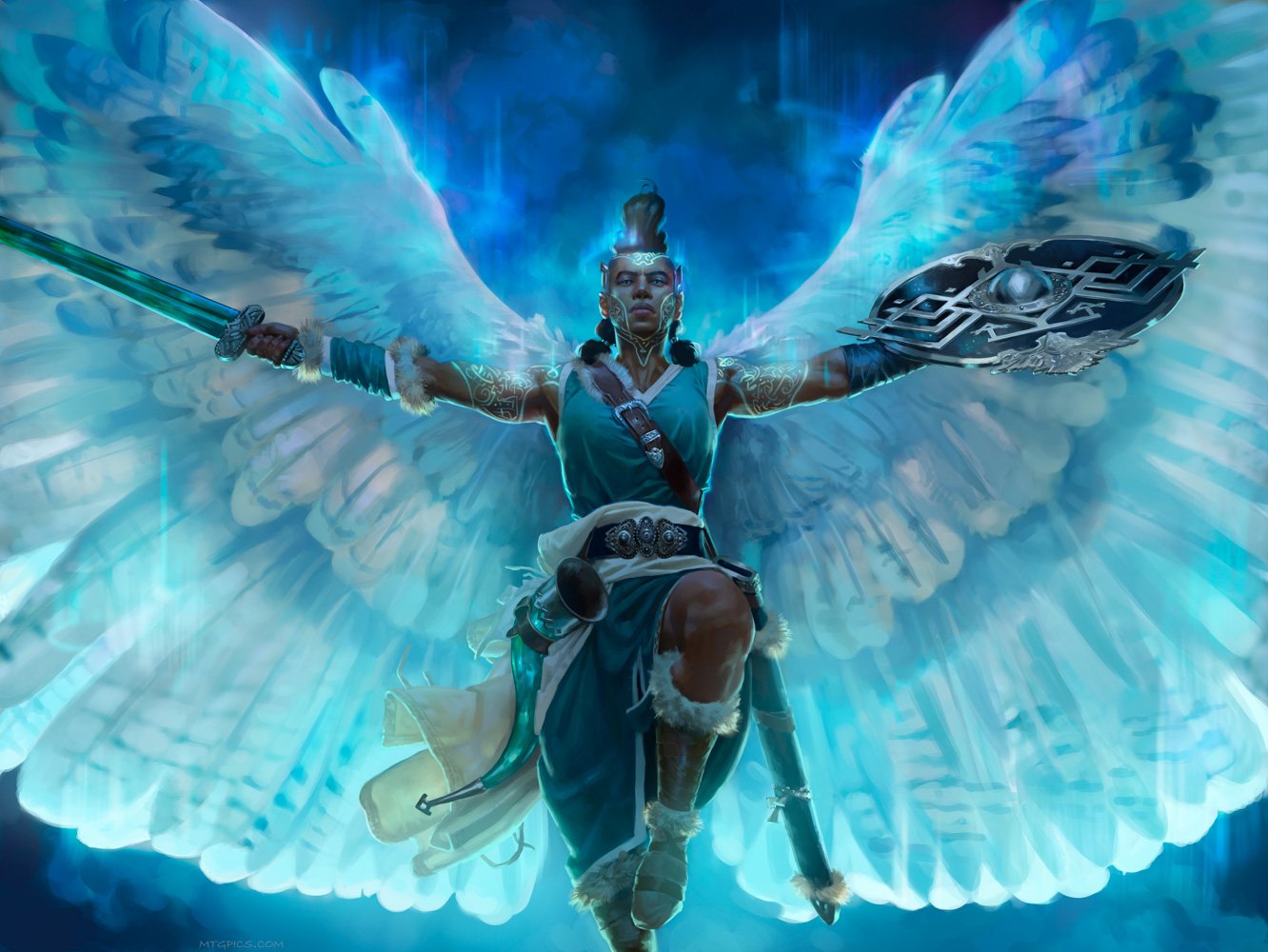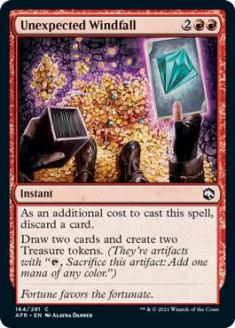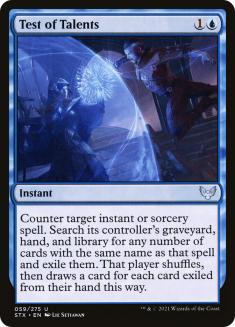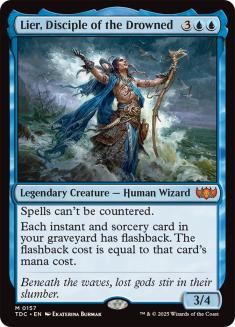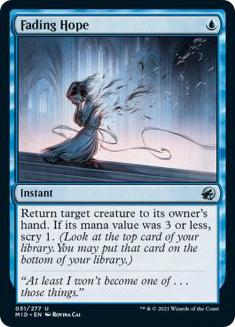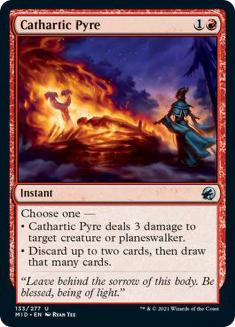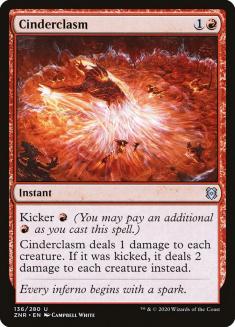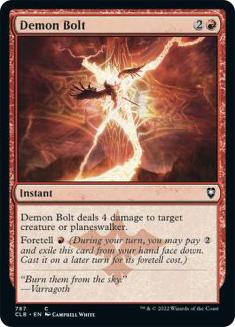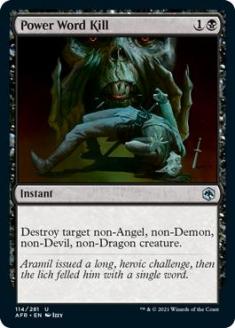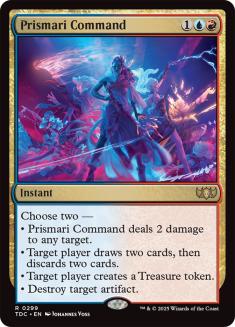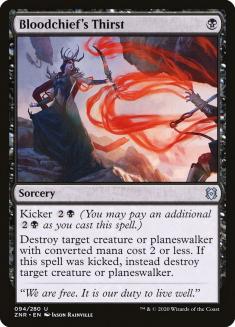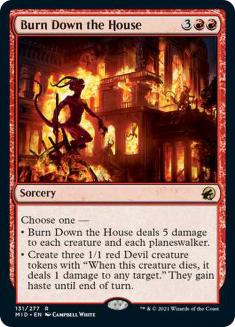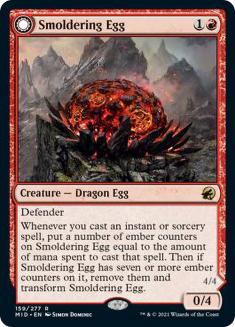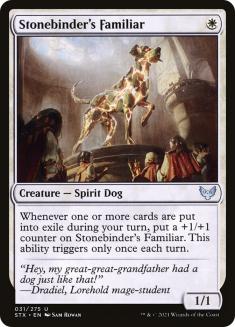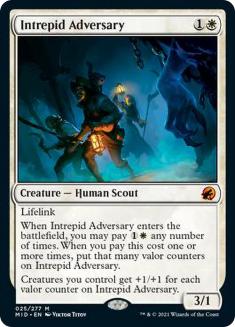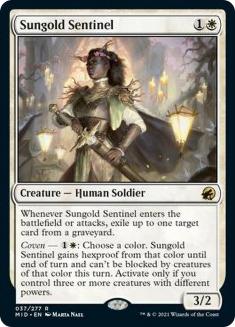Magic World Championship XXVII starts tomorrow!

I originally planned on writing about my predictions on what the sixteen competitors might bring to battle in Standard, but as we all know by now that information is already out. This really sucks for the players, who I can only imagine are extremely frustrated, but also for the viewers who still consider deck reveals at major events comparable to Christmas morning when we were kids. It’s an all around shitty situation.
That also means today’s article is going to be more about analysis than predictions. I wish more than anything that the toothpaste could be put back into the tube, but that’s not an option. So yeah, let’s do this I guess.
My Initial Metagame Predictions
Everyone and their mother knew Mono-Green Aggro❄ and Alrund’s Epiphany decks had top billing in this Standard format. My entire Twitter feed has been plastered with conversations about whether something from one or both strategies should be banned. Mono-Green Aggro❄ dominated all weekend in the SCG Tour Online Championship Qualifiers, putting five copies in the Top 8. Even our very own Ross Merriam chimed in on the conversation in his article about whether Alrund’s Epiphany should be banned.
So yeah, I thought both decks would be heavily represented. In my heart-of-hearts I thought Mono-Green Aggro❄ would be the better choice of the two, but there were some very unique factors to think about before making card selection choices for the archetypes. The first being, this select sixteen players aren’t very prone to playing linear aggressive decks. Instead, they tend to lean blue whenever possible. This throws a huge wrench in, as a Mono-Green Aggro❄ decklist only has so many slots for interaction with the best options being fight spells for the mirror and Snakeskin Veil for the Izzet strategies.
On top of all of this, we have no clue what the best Alrund’s Epiphany decks look like. Well, we didn’t anyway. Deck selection going into this tournament could be very interesting if a few teams or individuals either figured out the proper ways to build these decks or even if they thought they did. If that were to happen, all of a sudden a field that “should” have roughly 6-8 Mono-Green Aggro❄ decks might very well have twelve Izzet Epiphany decks instead.
I can only imagine the players in the event having similar discussions with their testing partners, and those ultimate decisions can honestly be seen in the decks and card choices that they eventually went with. That’s what we’re going to go over today. I’ll obviously be speculating a ton, but my goal is to try to get into the minds of these players and predict why they did the things they did.
Let’s start with some of my old testing partners.
Team Izzet Epiphany: Piloted by Stanislav Sifka, Ondrej Strasky, and Arne Huschenbeth
Lands (23)
Spells (37)

All three of these players brought a similar Izzet Epiphany decklist with a unique spin on the strategy: four copies of Unexpected Windfall. Normally players were playing the full four copies of Memory Deluge as their card draw spell of choice, and while it’s great in the mirrors, it falls flat against aggressive decks. Unexpected Windfall, on the other hand, is amazing against decks like Mono-Green Aggro❄, as it’s a great way to accelerate to eight mana for the ever-important Alrund’s Epiphany + Galvanic Iteration turns. Stan and Ondrej are so convinced in the potency of this plan that they’re even running four copies of Galvanic Iteration (which seems like a lot to me!)
What’s interesting to me is that they’re also playing Test of Talents in the maindeck. Now it’s not like this is the biggest stretch of the imagination, as it’s clearly one of the most powerful things you can do in the true mirrors Game 1. The list also plays four Unexpected Windfal which is a great way to “cycle” away dead cards like Test of Talents will be against Mono-Green and Mono-White Aggro.
Still, the combination of both Test of Talents maindeck and four copies of Unexpected Windfall has me assuming they planned for a ton of Mono-Green Aggro❄ and Izzet Epiphany mirror matches. I personally have found Unexpected Windfall to not be great in the mirrors so I was playing my copies in the sideboard, but maybe there’s something more to this card than I’m seeing. Maybe it’s still good enough given the fact you can copy it so many times with four Expressive Iterations at your disposal.
The sad reality for the Czech team is there won’t be many true mirrors in their future as Keisuke Sato is the only other player in the field piloting the strategy. Instead, a team of four young up and comers decided to go and break it with their take on Grixis Epiphany.
Team Grixis Epiphany: Piloted by Eli Kasis, Gabriel Nassif, Jan-Moritz Merkel, and Matt Sperling
Creatures (4)
Lands (23)
Spells (33)
- 2 Duress
- 1 Bloodchief's Thirst
- 2 Spikefield Hazard
- 1 Cinderclasm
- 2 Jwari Disruption
- 4 Alrund's Epiphany
- 1 Demon Bolt
- 1 Prismari Command
- 4 Expressive Iteration
- 1 Power Word Kill
- 2 Galvanic Iteration
- 3 The Celestus
- 1 Burn Down the House
- 3 Memory Deluge
- 1 Cathartic Pyre
- 4 Fading Hope
Sideboard

There aren’t enough hours in the day that would give me the amount of time I’d need to gush about this decklist as much as I want to. Seriously, I don’t even know where to begin. Normally I’m against adding third colors to decks that arguably don’t need them, and don’t remember the last time a Grixis deck was even good. My preconceptions on “Grixis piles” aside, this deck slaps on every metric I can think of! It’s a true modern-era masterpiece.
Lier and Fading Hope are the heart and soul of this deck, making the Mono-Green Aggro❄ matchup a piece of cake. Bouncing their three-drop is one of the most satisfying feelings in the game, but you still need to turn the corner before they have time to rebuild. Usually that meant getting to eight mana and taking multiple turns in a row. While that’s probably winning you the game, stock Izzet Epiphany weren’t always guaranteed that amount of time even when they bounced an early threat.
Lier gives this deck a wonderful bridge to the late-game, as it’s an amazing creature to play once you have a Fading Hope in the graveyard and a sixth mana source to flash it back the turn it entered the battlefield. This allows the deck to interact with another creature right away, but more importantly, the fight spells Mono-Green Aggro❄ may have in hand. If you and your Lier survive the turn, the games probably close to over once you untap.
Now you obviously don’t want to play counterspells alongside Lier so this team correctly identified black as a potential third color to give it access to cards like Duress and Go Blank as their interaction of choice against Izzet Epiphany. That way, they don’t lose to their own Lier when they can’t counter their opponent’s Alrund’s Epiphany. Go Blank, in particular, is very interesting as it’s a great way to permanently exile an Izzet Epiphany’s graveyard which may have copies of Galvanic Iteration and/or Memory Deluge.
All of this currently makes for some decent deckbuilding from this team, but what we’re about to sink our teeth into takes this deck choice from good to great.
Power Level vs Diminishing Returns
So there’s been this theoretical topic rattling around in my head for about a year or so now. A couple of times I’ve tried to get it down on paper, but it never felt ready. Well this Grixis Epiphany decklist does pretty much everything I’ve been thinking about for all this time so I guess I should finally talk about it, right?
So where do I begin? I guess we can start with the fact that Magic card design is changing (I guess has changed is a better way of putting it). Cards are just better now. Obviously you can poke that statement full of holes if you want to bring up ridiculously powerful cards from years past. So let’s say, “most cards are better now”, and when most cards are better none of them are. Sooooo maybe this topic needed more time to marinate…
Previously in Standard, the drop in power from the best version of an effect to the second/third/fourth best was much steeper than it is now. There just aren’t dud rares printed anymore, and most set’s good removal is also playable in Standard. This creates a ton of options when it comes to card selection instead of previously just jamming four copies of the clear best versions.
Normally having tons of options just allows you to be selective based on expective metagames. Scorching Dragonfire and Fire Prophecy are great examples, as they were constantly vying for the same space last season. Sometimes Dimir Rogues were popular, making you more interested in Scorching Dragonfire. Other times you really wanted the additional card selection in Adventure mirrors.
Other times, these options allow you to take into account another very important aspect to deck selection which is diminishing returns. Take Infernal Grasp for example. Here’s an amazing removal spell that lets you just kill whatever creature you want… with a catch. You have to lose two life. It’s not like that’s that big of a deal, but it would add up if you just kept spamming the Infernal Grasp button on every creature your opponent cast. Throw Lier into the mix and you realize that you maybe should try diversifying.
That’s exactly what this team did with their removal suite, as they’ll all pretty much do the same things in the early stages of games. The benefit is that once the game drags on, as intended of course, a Lier on the battlefield will now give them more options on how they want to sequence for the win. This can create a huge advantage, as options are always better than not when it comes to similarly powered effects.
What really hammers this whole theory home for me is the one Smoldering Egg. Normally decks will play zero or four copies of a card like this. That makes sense, because they either want them or they don’t. This team identified that a card like Smoldering Egg was powerful enough to play, but the diminishing returns of drawing more than one copy per game wasn’t justifiable. After all, there’s a ton of similarly powerful cards to play so why not play a larger quantity of unique cards if the quality of them isn’t lowered. That way they won’t be impacted by the law of diminishing returns, allowing them to have their cake and eat it too!
If it weren’t for this last strategy we’re about to discuss, I would have predicted someone on Team Grixis Epiphany would almost assuredly be taking home the Magic World Championship XXVII trophy (or get a trophy mailed to them at the very least)! Obviously that still is a very likely scenario given how great their deck is and how amazing all four players are to boot. It’s just that they may not have given Mono-White Aggro❄ the respect it deserves.
Team Mono-White Aggro❄: Piloted by Yoshihiko Ikawa and Rei Sato
Creatures (29)
- 4 Luminarch Aspirant
- 4 Usher of the Fallen
- 3 Reidane, God of the Worthy
- 4 Elite Spellbinder
- 3 Stonebinder's Familiar
- 4 Intrepid Adversary
- 4 Sungold Sentinel
- 3 Adeline, Resplendent Cathar
Lands (24)
Spells (7)

While I was excited by the idea that Mono-White Aggro❄ might become a competitive deck in this Epiphany/Chariot metagame, every list I tried out just fell flat. I don’t even know what it was exactly, but it just seemed that every list was riddled with problems that had no solutions. Like the one-drops sucking too much, or that if I missed a land drop, I was already too far behind to ever have a chance of catching up. Whatever it was, it only felt I was winning games where I drew exceptionally or they drew poorly.
I wrote the archetype off assuming zero people would bring it to Magic World Championship XXVII and by looking at the other fourteen decklists, I’m fairly certain the other competitors felt the same. Much to their dismay, Rei and Yoshihiko found a wonderfully tuned and exciting version of the deck that doesn’t have a lot of the same issues the variants before theirs had.
Scaling
This decklist is amazing, and the key reason is its scaling potential. Cards like Stonebinder’s Familiar and Sungold Sentinel go a long way towards allowing the deck to win longer games, even those it never dealt early damage. That’s a huge boon to this archetype, as it’s normally pressured into presenting pressure. Rei and Yoshihiko’s list still has those great aggressive starts, but instead of playing lower-power cards to create redundancies on its curve, they instead just play more cards that can be better later in the game. Genius!
Now, of course, it’s still a Mono-White Aggro deck, so every card in the strategy can get outclassed or overrun — that’s just the name of the game when you play Mono-White. Still though, this variation on the deck is much better than any previous iteration I’ve seen. Coupled with the fact that the metagame seems to have ignored the archetype, I’m pretty sure both of these players are excited at a possible World Championship win.
The Tension Builds
Just because I’m only excited about three of the decks doesn’t mean the other half of the field should be counted out. All sixteen players in this event proved their abilities to the world this past season and I’m super excited to watch all the action unfold. More than likely you’ll find me co-streaming all the Constructed action on my Twitch channel. Hope to see you there or watch the main channel. It should be a great weekend!

